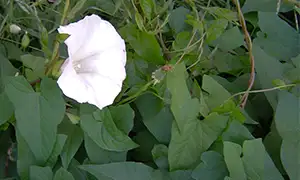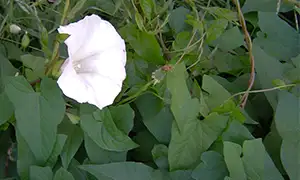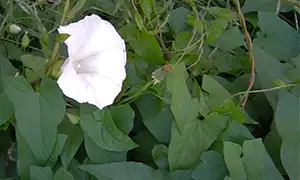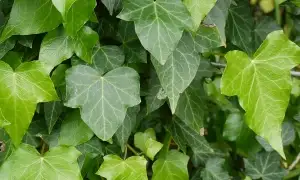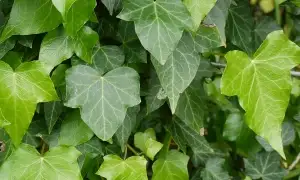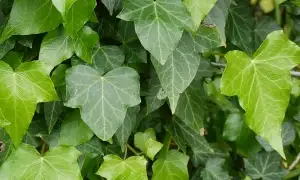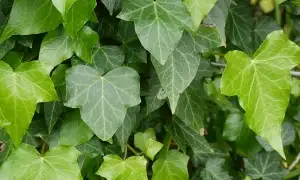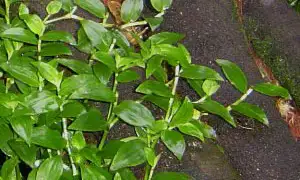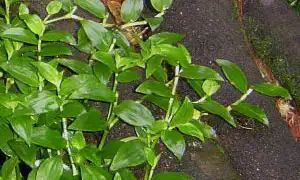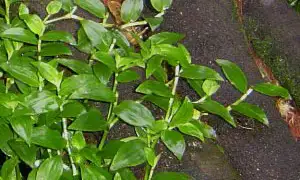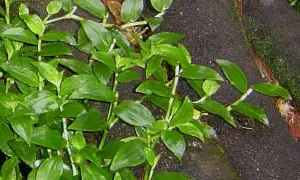Botanical name: Clematis vitalba
Family name: Ranunculaceae
Overview
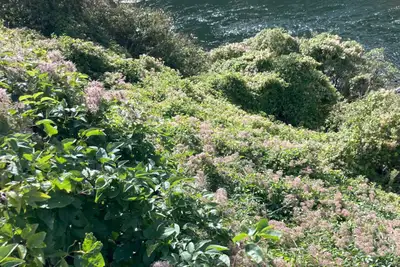
Old man's beard clambering over vegetation near a river.
Old man’s beard is one of the most troublesome environmental weeds in New Zealand. Botanically it is known as a liana which is a perennial, vine-like species with very long climbing stems that allow it to grow up to the top of native bush canopies then over the top of the canopy, blocking light to the trees and shrubs underneath. It has a woody perennial stem system that allows this growth, but it relies on the shrubs and trees it grows on for support, attaching to these plants using twisting leaf petioles. The plant is deciduous, losing its leaves over winter. But unlike great bindweed which needs to regrow stems from ground level in spring, old man’s beard has permanent woody stems that remain up in the canopy from which new leaves and stems form in spring.
Old man’s beard gets its name from the fluffy seed structures that form from flowers in autumn, and these can remain in the canopies of trees through winter when leaves of the plant have died. The seeds can blow around in the wind with the assistance of these fluffy structures, allowing dispersal for some distance from the mother plant. Research at Massey University has shown these “aerial seeds” are dormant initially in autumn though this dormancy wears off during winter and spring. As well as being blown around, seeds that fall into nearby streams or rivers are able to float downstream and especially with flood events, can then be deposited on riverbanks as flooding recedes to allow new plants to establish.
Old man’s beard has invaded many blocks of native vegetation and, once established, is very difficult to control selectively without killing the native plants underneath. It often causes problems in new riparian plantings, growing over newly planted natives and killing them due to competition for light. But it can also kill much more mature shrubs and trees.
Our research has shown it also has an extensive stem system along the forest floor, which can also be found underground, especially in areas near rivers where flooding deposits silt over the stems. If these lateral stems are not controlled, old man’s beard will regrow from control attempts on stems growing upwards. Stem fragments that snap off during flood events can also float downstream and allow new plants to establish if these are deposited after flooding in silt deposits.
Distinguishing features

Five leaflets of old man’s beard leaf and flowers.
Old man’s beard was initially brought to New Zealand as an ornamental clematis species to grow in gardens. It has spread into waste areas, roadsides and native bush by seeds blowing in the wind and gardeners dumping their garden waste along rural roadsides. There are also native clematis species such as Clematis paniculata which are not invasive. These native species generally have three leaflets, whereas most leaves on old man’s beard have five widely-spaced leaflets, with two opposite pairs of leaves and one leaflet at the end (see picture). Old man’s beard is deciduous, with its leaves dying off in late autumn or early winter each year, whereas the native clematis species are evergreen.
The flowers of old man’s beard are creamy white, about 2-3 cm in diameter and appear from December to May. Flowering of native clematis species occurs from August to December. These flowers then form clusters of seeds with distinctive white plumes (3-4 cm long) in fluffy clusters that persist over winter even after the leaves have died back. These fluffy seed-heads are often the most characteristic aspect of this species to help people realise old man’s beard is present, even from a distance, yet they are often attract attention in winter which is the least useful time to try killing the species. But the plumes are also present in autumn, as shown in the picture by the river, which is a good time to spray them. This weed is also known in UK as travellers’ joy as it was felt the feathery seed-heads gave beauty to the winter landscape.
Its habit of growing over surrounding vegetation is another useful way of spotting it during the growing season when herbicides are best used. Apart from differentiating this smothering vine-like growth from native clematis species, there are also other vine-like weeds that grow like this over summer. A common weed in areas where old man’s beard grows is great bindweed, though this has single, heart-shaped leaves, its white flowers are much larger than those of old man’s beard and it does not have the woody stems of old man’s beard. Other vine-like weeds that might be confused with old man’s beard include moth plant which also has wind-blown seeds (though this species has large green fruits) and Japanese honeysuckle which also has white flowers but these are quite tubular and form glossy black berries.
Control
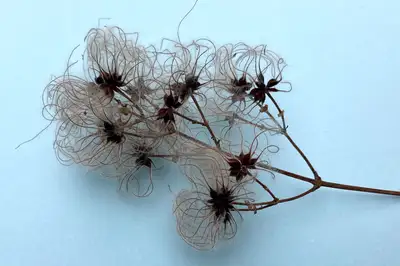
Clusters of old man’s beard seeds in winter.
For old man’s beard found growing on roadsides and in waste areas where it is not growing over native plants, our research suggests that spraying triclopyr or a triclopyr/picloram mix is the best way to control this species from spring to autumn. These translocated herbicides will hopefully control any underground parts of the plants yet won’t kill any grasses that are present at the site. The soil will probably have seeds of old man’s beard present, and if the grass cover is also removed at the site, seedlings can develop in the bare soil. We have found that these seedlings are easily out-competed by a strong perennial grass cover. The seedlings can also be controlled by grazing livestock if they should try to get established in pasture areas where the grass is not very competitive. Although metsulfuron or glyphosate will also control old man’s beard, these can severely damage or kill the grass cover, allowing new seedlings to establish.
When old man’s beard is growing over native vegetation, it becomes much more difficult to control if the native vegetation is to be kept alive. Although attempts have been made in the past to control thick stands of old man’s beard growing over native vegetation by aerial spraying of clopyralid, this has generally not worked well. This herbicide was selected as it damages less native species, but there are still quite a few species that are affected by it. Also it is not the most effective herbicide for old man’s beard control, so high rates were needed and because it was being applied to the tops of the stems, there was seldom sufficient translocation down to the root system of the weed to give lasting control.
A number of biological control agents have been released to selectively control old man’s beard growing over native vegetation, but so far these have not shown much effect on the infestations found in many parts of New Zealand.
Most control nowadays is attempted from ground level when old man’s beard grows amongst native species. One strategy is to cut the stem about 1 m above the ground and then immediately treat the cut stems with a gel formulation of herbicide, with picloram probably more effective than glyphosate for this role. However, picloram from the gel can enter the soil and affect nearby plants. In our research, we found good control can be obtained by leaving the stems uncut and applying a triclopyr-in-oil product (X-Tree Wet and Dry) around the circumference of the stems near the base in autumn, taking care not to get any on nearby natives. The herbicide then moves through the bark and translocates throughout the vine better than if it has been cut.
There have been some cases recently of old man’s beard causing problems in new pine plantations. Often these sites are sprayed in winter with a glyphosate/metsulfuron mix, but the weed is dormant at this time so is not affected. There is then often bulldozing of sites that were cut-over forests to form windrows of slash, then trees are planted between these rows. The dormant stems of old man’s beard get pushed into these windrows then the old man’s beard will grow out of these windrows in spring and up over the newly establishing pines. Spraying sites pre-planting in autumn before the vines go dormant will solve this issue. Likewise with riparian plantings, ensure old man’s beard is selectively removed from sites in autumn before planting the sites.
